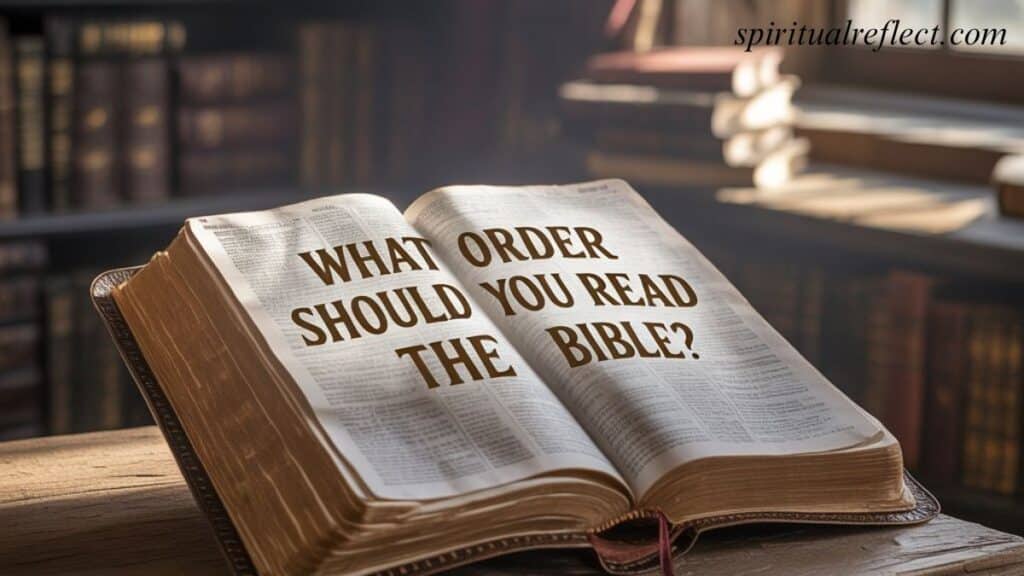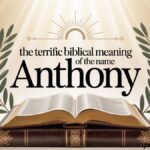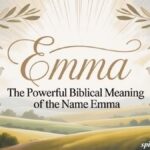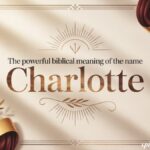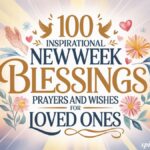What order should you read the Bible in refers to the sequence or plan someone follows to read through the books of Scripture. Because the Bible isn’t arranged like a single continuous story but rather a collection of law, history, poetry, prophecy, gospels, and letters, the order you choose can dramatically influence your understanding. Each method—whether traditional, chronological, thematic, or New Testament-first—offers a unique perspective on God’s Word and the journey of faith.
Imagine opening the Bible and feeling less overwhelmed, knowing exactly where to begin and how each passage connects. Instead of guessing your way through, the right approach can turn daily reading into a meaningful habit. Whether you’re just starting your spiritual journey or revisiting familiar passages, the order you follow can make the difference between confusion and clarity.
Exploring what order to read the Bible isn’t about rules—it’s about discovering a path that fits your faith goals. Some readers want to grasp the historical timeline, while others desire an immediate connection with the life of Jesus and the early church. Still others look for themes of wisdom, worship, or prophecy woven throughout. By choosing the best reading order, you’ll not only deepen your biblical literacy but also encounter God’s plan with fresh eyes.
Reading the Bible in Traditional Book‑By‑Book Order
The simplest way is to start in Genesis and end in Revelation, following the order in which most Bibles are printed.
How It Works
- Read Genesis through Malachi (the Old Testament).
- Then continue with Matthew through Revelation (the New Testament).
Benefits
- Familiarity: Matches the structure of nearly every published Bible.
- Completeness: Guarantees you read every book.
- Literary flow: You experience the structure from law, history, wisdom, prophecy into Gospels, Acts, letters, and Revelation.
Challenges
- Some books (Leviticus, Numbers, genealogies) can feel tough for beginners.
- Historical events aren’t always in order. For example, Kings and Chronicles overlap with the prophets.
Who Should Try It?
- Readers who want the full Biblical foundation without skipping.
- Students of theology who want to experience the Bible in its preserved format.
Reading the Bible in Chronological Order

The chronological approach arranges Scripture according to the historical timeline of events. Instead of reading straight through, you follow the order in which events likely occurred.
How It Works
- Start with Genesis, Job (set in patriarchal times), then Exodus.
- Read Judges, Samuel, and Kings alongside the prophets who ministered in those eras.
- Place the Psalms of David during his reign.
- Move into post‑exile writings (Ezra, Nehemiah, Esther).
- In the New Testament, read the Gospels in parallel, then Acts interwoven with Paul’s letters in the order he wrote them.
Benefits
- Context: Helps you understand God’s plan as it unfolded through covenants and fulfillment.
- Connections: Prophets line up with events they spoke into, so you see cause and effect.
- Historical clarity: The Biblical narrative flows like a story.
Challenges
- Requires a reading guide or a chronological Bible.
- Sometimes you switch between books frequently, which can feel fragmented.
Example Chronological Sequence
| Time Period | Books/Sections |
|---|---|
| Patriarchs & Early History | Genesis, Job |
| Exodus & Conquest | Exodus, Leviticus, Numbers, Deuteronomy, Joshua |
| United/Divided Kingdom | 1–2 Samuel, 1–2 Kings, Psalms, Proverbs, Prophets |
| Exile & Return | Ezekiel, Daniel, Ezra, Nehemiah, Esther |
| Early Church | Gospels (parallel), Acts, Paul’s letters (in order), General epistles, Revelation |
Who Should Try It?
- Those who love history and want to understand the big picture of God’s covenant relationship with His people.
Reading the New Testament First
For many, beginning with Jesus feels natural. This method dives into the heart of the Gospel message before working backward to the Old Testament.
How It Works
- Start with the Gospels: Mark (shortest, action‑packed) or John (deep theology).
- Continue with Acts to see the growth of the early church.
- Read Paul’s letters (Romans, Galatians, Ephesians, Philippians) to learn doctrine and Christian living.
- Move into the rest of the New Testament before circling back to Genesis.
Benefits
- Faith first: Direct encounter with Jesus and salvation.
- Clarity: Easier entry point for beginners.
- Practical: Helps apply Scripture immediately to daily life.
Challenges
- Without an OT background, some teachings (like covenant fulfillment or prophecy) may feel incomplete.
- You’ll miss the Biblical foundation that shows why Jesus came.
Who Should Try It?
- Beginners and new believers.
- Anyone who wants to focus first on the life of Jesus and the early church.
Reading by Thematic or Topical Order
This method organizes the Bible by themes such as wisdom, worship, discipleship, or eschatology.
How It Works
- Build a plan by choosing topics. For example:
- Grace & Redemption: Genesis, Exodus, Isaiah, John, Romans.
- Wisdom for Living: Proverbs, James, Ecclesiastes, Sermon on the Mount (Matthew 5–7).
- Prophecy & Hope: Daniel, Zechariah, Revelation.
- Prayer & Worship: Psalms, Luke, Philippians.
Benefits
- Engaging: Keeps your study fresh.
- Focused: Helps when working through personal questions or spiritual needs.
- Connecting dots: You’ll see how Scripture speaks consistently on major themes.
Challenges
- No single “storyline” of the Biblical narrative.
- Requires effort to build or follow a thematic plan.
Who Should Try It?
- Believers want a deep dive into specific issues.
- Study groups or classes tackling Biblical themes.
Reading One Old Testament and One New Testament Passage Daily
This balanced approach mixes both testaments in your daily reading.
How It Works
- Read a chapter (or section) from the Old Testament.
- Read a chapter (or section) from the New Testament.
- Optional: Add a psalm or a proverb each day.
Example Daily Plan
- Day 1: Genesis 1 + Matthew 1 + Psalm 1.
- Day 2: Genesis 2 + Matthew 2 + Psalm 2.
Benefits
- Variety: Prevents burnout in more difficult passages.
- Balance: Constantly connects prophecy and fulfillment.
- Consistency: Encourages a steady daily habit.
Challenges
- Can feel “split” without context.
- Some readers may prefer to stay immersed in one book at a time.
Who Should Try It?
- Anyone seeking a devotional reading plan with a steady rhythm.
- Believers who want both wisdom and Christian doctrine daily.
Specialized or Hybrid Reading Plans
Some reading strategies combine the above methods into hybrid approaches tailored for different goals.
Examples
- 90‑Day Overview: Covers key sections quickly for a bird’s‑eye view.
- Gospel & Psalms Plan: Perfect for a worshipful focus on Jesus and prayer.
- Historical Context Plans: Include maps, commentary, and background study.
Who Should Try It?
- Readers with limited time.
- Students want both devotional reading and academic study.
- Anyone seeking flexibility.
Choosing the Best Bible Reading Plan for You

So, what’s the best order? The answer depends on your goal, background, and commitment.
Key Questions to Ask
- What do I hope to gain—history, theology, spiritual growth, or application?
- How much time can I devote each day?
- Do I prefer structure or flexibility?
- Am I a beginner, or do I already have some biblical literacy?
Matching Goals to Plans
| Your Goal | Best Fit Plan(s) |
|---|---|
| Learn about Jesus & salvation quickly | New Testament‑first, Gospel focus |
| Understand the story of redemption | Chronological plan |
| Tackle personal issues or spiritual growth | Thematic order |
| Balance variety with depth | Old + New Testament daily plan |
| Cover every book comprehensively | Traditional book‑by‑book plan |
Tips for Sticking With Your Bible Reading
Even the best Bible reading plan won’t help if you can’t sustain it. Consistency matters more than speed.
Practical Advice
- Use tools: Reading apps, physical bookmarks, or a printable checklist.
- Stay accountable: Share your plan with a friend or group.
- Reflect daily: Write down insights, journal prayers.
- Be realistic: Missing a day isn’t failure. Pick back up.
- Pray: Ask the Holy Spirit for guidance and wisdom as you read.
“Your word is a lamp to my feet and a light to my path.” — Psalm 119:105
Conclusion
Choosing what order should you read the Bible depends on your purpose. Some want to see the big story in chronological order. Others prefer to start with the New Testament and focus on Jesus. Many enjoy the balance of reading both the Old and New Testament daily. Each approach has value, and each reveals God’s Word in a fresh way.
The most important step isn’t which plan you pick, but that you begin and stay consistent. When you ask yourself what order should you read the Bible, remember that every page points to God’s love and His plan of salvation. Find the method that inspires you, commit to it, and let Scripture guide your faith, your choices, and your everyday life.
FAQs
1. What order should you read the Bible in if you are a beginner?
Start with the Gospel of Mark or John, then Acts and Paul’s letters, before moving to the Old Testament.
2. Is reading the Bible in chronological order better?
Chronological reading helps you see the historical timeline clearly, but it requires a structured plan or guide.
3. How long does it take to read the Bible in order?
On average, reading 3–4 chapters daily allows you to finish the Bible in about one year.
4. Can I read both the Old and New Testaments together?
Yes, many reading plans recommend one Old Testament and one New Testament passage daily for balance and variety.
5. Which Bible reading plan is most popular in 2025?
The YouVersion Bible App one-year plans and the M’Cheyne plan are among the most widely used worldwide.

Rana Ahmad is the creator of Spiritual Reflect, where she shares insights on personal growth, mindfulness, and meaningful living to inspire a more intentional life.

